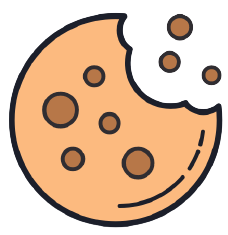Don’t resign yourself to a life of discomfort. Here’s how to stop hurting.
Pam had always enjoyed hiking, kayaking, and skiing. But beginning in her late 50s, she noticed her left knee was starting to bother her, and soon the osteoarthritis made it too uncomfortable to enjoy the activities she loved. By the time she reached her 70’s, it was painful just to walk or drive. She decided to have knee replacement surgery, which helped many of her friends. Unfortunately, the new knee wound up hurting even more, because it was discovered that Pam was allergic to at least one of the metals it contained. Doctors told her replacing the knee again wasn’t an option and she would just have to live with the pain.
Palliative Care estimates that about 19 percent of the Indian population — around 200 million people — experience chronic pain. Of these, more than over 30 percent said the pain interfered with their day-to-day living Aching backs and knees, neck and shoulder pain, headaches, sore feet and arthritic hands are a daily part of life for many.
“Low back pain is one of the most common conditions we treat.” Once people reach their 60s, nearly half will suffer from some degree of back pain.
By the time patients consult a pain specialist, they’ve usually tried to manage the pain on their own with rest, heat, ice and over-the-counter medications such as ibuprofen or acetaminophen. And they’ve probably been to see their primary care provider. But many are still hurting.
Pain management is a relatively recent medical specialty. For years, the most powerful and effective drugs in the specialty’s arsenal were opioid medications such as morphine, oxycodone, hydrocodone, and fentanyl. But we know these drugs have fueled an epidemic of addiction that the World Health Organization estimates killed more than 4,80,000 people globally in 2019. Most doctors are now reluctant to prescribe them (though these medications still have an important role in easing pain from cancer and surgery, as well as pain that is not helped by other methods). And most patients are reluctant to take them. Does that mean we’re destined to keep hurting?
Not at all. The options for pain relief are growing at an impressively rapid rate. “The rate is exploding.” People are living longer and don’t want to accept chronic pain or immobility. And we can drastically improve their quality of life.
Here are a few of the newer drugs and procedures that pain specialists can offer.
INEJECTIONS:
Targeted injections with steroid drugs or hyaluronic caid gel can help relieve pain in knees and other joints, while epidural injections (into the space around the spinal cord) can help minimize sciatic pain in the lower back and down the leg.
ALTERNATIVES TO OPINOIDS:
New drugs aim to alleviate severe pain without the risk of addiction, and without unpleasant opioid side effects like nausea, vomiting, and constipation.
NERVE BLOCKS AND ABLATIONS:
Injecting nerves with anesthetics to block pain signals can provide temporary relief. For longer-lasting results, doctors can damage or destroy the portions of the nerves that are responsible for localized pain. The most common of these procedures is radio-frequency ablation (RFA). After determining which nerve areas are responsible for the pain, the doctor inserts a long needle into each, delivering heat to deaden it.
This is the option that was recommended to Pam. When the effect wears off, generally in six months to two years (nerves can regenerate), the procedure can be repeated.
And this is just a sampling. Other techniques for easing pain include: spinal cord stimulators to help with chronic leg or back pain related to spinal disease vertebral spacers that can help with back and related pinched-nerve pain bone cement to help with pain from fractures peripheral nerve stimulator implants to help with localized intrathecal drug pumps, which are implanted to deliver small doses of drugs around the spine.
Some of these options are so specialized that even primary care providers may not know about them.
“There are still a lot of providers who send patients to us just for opioids, not aware of all these things we can do.”





